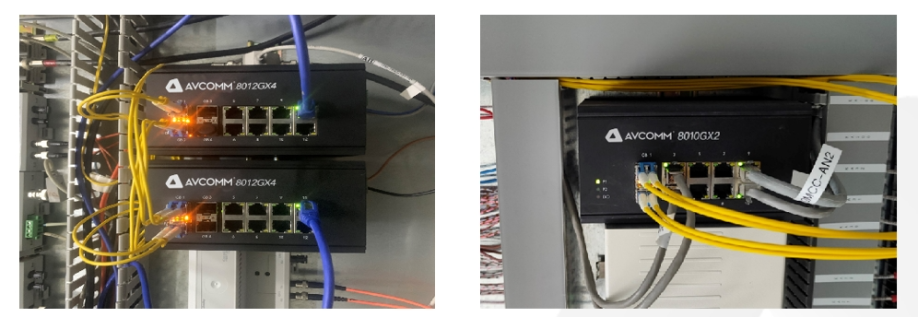How to Ensure a Seamless Upgrade from Original 100 Mbps Industrial Network to Full Gigabit?
——Exploring Technical Analysis and Case Study
Background
More and more users are considering and consulting us on how to seamlessly integrate gigabit industrial switches with existing 100Mbps devices, gradually replacing and upgrading to a full gigabit industrial network.
Currently, industrial networks face dual challenges of modern business bandwidth demands and the supply of original equipment spares. On one hand, the data volume in modern systems has significantly increased, driving the growing need for gigabit-speed in industrial network systems. On the other hand, with chip iterations, production of existing 100Mbps industrial switches is gradually decreasing, leading to rising prices.
Users have core requirements for continuity and stability in industrial production. AVCOMM's full gigabit industrial switches thoroughly consider the details of equipment replacement and upgrades, alleviating concerns for users.
So, how do we ensure the seamless upgrade from 100Mbps to full gigabit network?

1. Ensuring Ethernet Protocol Compatibility
Before discussing the issues related to combining a 100Mbps ring network with a Gigabit switch, it's important to understand the protocol-level differences between 100Mbps Ethernet (100BASE-T) and Gigabit Ethernet (1000BASE-T). 100 Mbps Ethernet typically comply with the IEEE 802.3u standard, while gigabit Ethernet switches such as AVCOMM comply with IEEE 802.3u, IEEE 802.3ab, and 802.3z standards. Both 100BASE-T and 1000BASE-T Ethernet follow the TCP/IP protocol, enabling seamless interoperability. Therefore, when the Gigabit industrial switch is applied to the 100M ring network, there will be no compatibility problems at the network layer and above.
IEEE: https://www.ieee.org/

5. Comprehensive Cost Advantages
When considering an upgrade to a gigabit switch, cost is a significant factor to consider. Despite the typically higher initial cost of gigabit equipment compared to 100 Mbps devices, the high-speed transmission and improved network management capabilities they provide can result in long-term benefits. For instance, gigabit switches can enhance data processing capabilities and response times in data centers, thereby improving overall business efficiency. Furthermore, with technological advancements and network expansion, gigabit switches are poised to become standard in future networks.
Upgrade Cases and User Feedback
Since 2023, one out of every three calls we receive involves inquiries about upgrading from 100Mbps to Gigabit. In a coal transportation system renovation project for a well-known steel company, the user added cameras to a few control boxes to enhance video monitoring of operations. To save costs, they decided not to replace all industrial switches, but only to upgrade the network equipment at nodes where cameras were added, ensuring PoE power supply and enhanced switching capabilities, while also preparing for the next step of upgrading to a full Gigabit ring network. To meet this need, we chose the 6000 series POE industrial switches and integrated them with the existing 100Mbps industrial switches, forming a 100Mbps ring network. The compatibility of the fiber port speeds ensured no need to change any configurations or interface types, allowing the new Gigabit devices to be connected seamlessly. Additionally, this provided early preparation for the next phase of upgrading the old equipment. Initially, the user was concerned about the compatibility of the device speeds. However, once the equipment was powered on, communication was restored within 2 minutes, much to the user's surprise. The user’s engineer remarked, "The originally reserved 1-hour downtime seems to have been overly cautious.”
AVCOMM Industrial Gigabit Switch

8000 Series Gigabit Switch
https://inc.avcomm.us/shop/category/industrial-networking-fully-managed-8000-series-22
6000 Series Gigabit POE Switch
https://inc.avcomm.us/shop/category/industrial-networking-poe-6000-poe-series-21


4000 Series Gigabit Switch
https://inc.avcomm.us/shop/category/industrial-networking-unmanaged-4000-series-20
7000 Series Gigabit Switch
https://inc.avcomm.us/shop/category/industrial-networking-fully-managed-7000-series-30


5000 Series Gigabit Switch
https://inc.avcomm.us/shop/category/industrial-networking-data-33